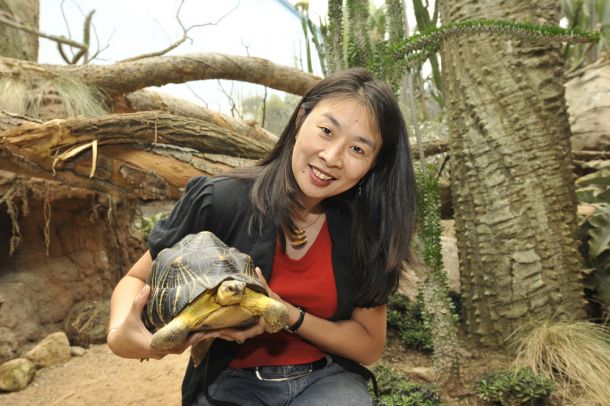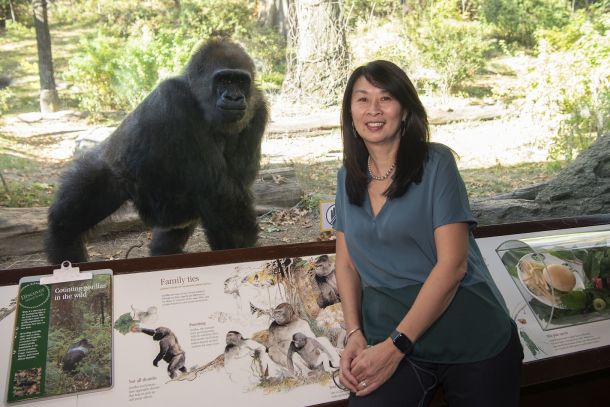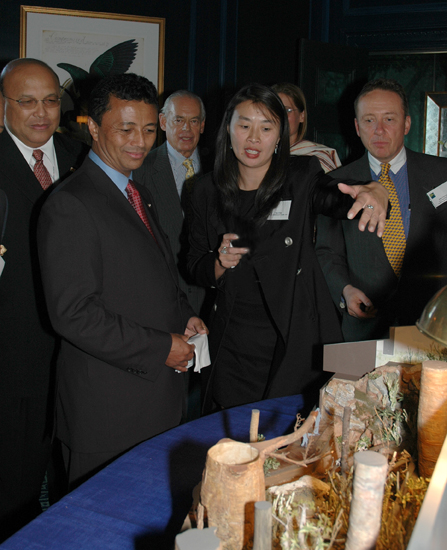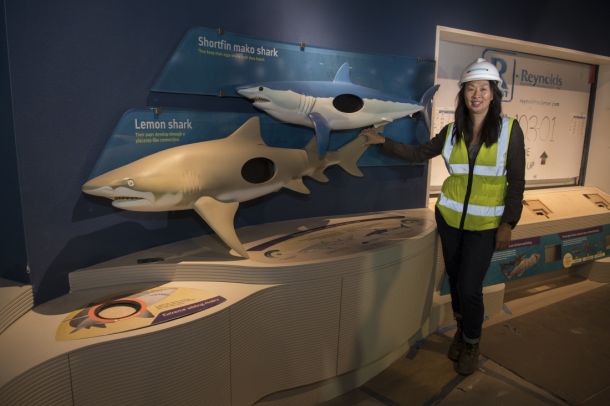This piece comes to us from the Wildlife Conservation Society (WCS). To honor Asian and Pacific Islander Heritage Month, WCS and Nature are sharing stories of nature and conservation.

Sue with a radiated tortoise in the Madagascar exhibit at the Lion House. Photo credit: Julie Larsen Maher ©WCS
The mission of the Wildlife Conservation Society (WCS) is to save wildlife and wild places, but as an organization headquartered at the Bronx Zoo in New York City, it also nurtures people like me. I was born in the United Kingdom and moved to the Bronx when I was twelve. A zoo visit was a regular family outing and a way for my parents to fuel my interest in all things related to animals and nature. For a kid in the Bronx, this was my access to the natural world.
My “career” started at the Bronx Zoo as a seasonal employee when I was sixteen. Finding my passion took a couple of tries. My first weekend was spent selling hot dogs. Next, I became a membership salesperson where I learned more about the organization and its mission. Then I moved on to doing live interpretation that focused on conservation messaging using animals. Through this type of engagement, I could see the impact on visitors immediately! I was hooked!
Although this was a critical turning point for me at the time, I don’t think I realized it then. I was pursuing my other dream, to be an architect. While researching my thesis project on spaces that support education, I found an opportunity to work part-time in the WCS Exhibition and Graphic Arts Department (EGAD) and embarked on a career designing zoo and aquarium exhibits.

Sue was part of the team that designed Congo Gorilla Forest at the Bronx Zoo which opened in 1999. Photo credit: Julie Larsen Maher ©WCS.
EGAD is a multidisciplinary design department responsible for exhibit design, interpretation, graphic design, architecture, landscape design, and construction at the Bronx Zoo, Central Park Zoo, Prospect Park Zoo, Queens Zoo, New York Aquarium, and select global conservation projects. As Vice President of Planning and Design and Chief Architect for WCS, I lead the EGAD team. I am a licensed New York State Architect, a Fellow of the American Institute of Architects (FAIA,) a member of the American Association of Museums (AAM), and the Association of Zoos and Aquariums (AZA).
Earlier on in my career, as an Asian American, I didn’t fit in anywhere. In the zoo and aquarium profession, I would attend a 2,000+ person conference and be one of a handful of Asians. In the architecture and construction profession, most of the time I was the only Asian and only woman in the room—and let’s not even factor in being British and from the Bronx!
This was just my reality and I honestly didn’t think much about it. Along the way, I had many mentors and allies, most of who didn’t look like me but whose support and guidance shaped my career. These people were instrumental in encouraging my development and professional goals and now I endeavor to do the same: as an Asian-American, as a woman, and as a native Bronxite!

In 2004, Sue showing a model of the Madagascar exhibit to Former President of Madagascar, Marc Ravalomanana. Photo credit: Julie Larsen Maher ©WCS.
Design and wildlife are my passions and I am privileged to be able to combine them in a way that has an impact. Our exhibits are choreographed to tell a story and engage visitors with the animals and cultivate an emotional connection through inspirational animal experiences. We introduce guests to amazing animals and unfamiliar habitats, threats to their existence, and the conservation work that is being done to reduce those threats. Motivated by travel to natural areas around the world, I want to bring those experiences back to our NY visitors—to connect them with nature and animals —and empower them as advocates for conservation.
A holistic design vision is necessary to make sure that we use every tool we have to create powerful exhibits that are inclusive and accessible. Immersive exhibits created through architecture, landscape design, graphic design, and focused storytelling require ensuring that design decisions reinforce, not detract, from the story and experience, whether it’s the choice of materials, the topography, the planting, a soundscape, or a photo or illustration.
This is the philosophy we used for many exhibits at our zoos and aquarium, including Congo Gorilla Forest, Tiger Mountain, Madagascar at the Lion House, and Ocean Wonders: Sharks! (a major new building and exhibit at the New York Aquarium.) An important aspect of our work has been integrating sustainable strategies into planning and design, a decision that resulted in the adaptive re-use of a landmark Beaux Arts building, the Lion House—New York City’s first LEED (Gold) certified landmark.

Sue at Ocean Wonders:Sharks! during construction at the New York Aquarium. Photo credit: Julie Larsen Maher ©WCS.
We have also worked with our global conservation staff on design projects in Uganda and Kenya, a marine research facility in Belize, interpretive centers in Costa Rica and Rwanda, and an education campus and visitor’s center in Madagascar; all aimed at connecting increasingly urban communities to their native wildlife.
Each of these projects illustrates how design and integrated content and messaging contribute to inspiring people to care about nature and animals with the ultimate goal of creating advocates for conservation. Continuing to have an impact is what has kept me in this career and made me so glad that a summer job where I began selling hot dogs led me to the career of a lifetime!
